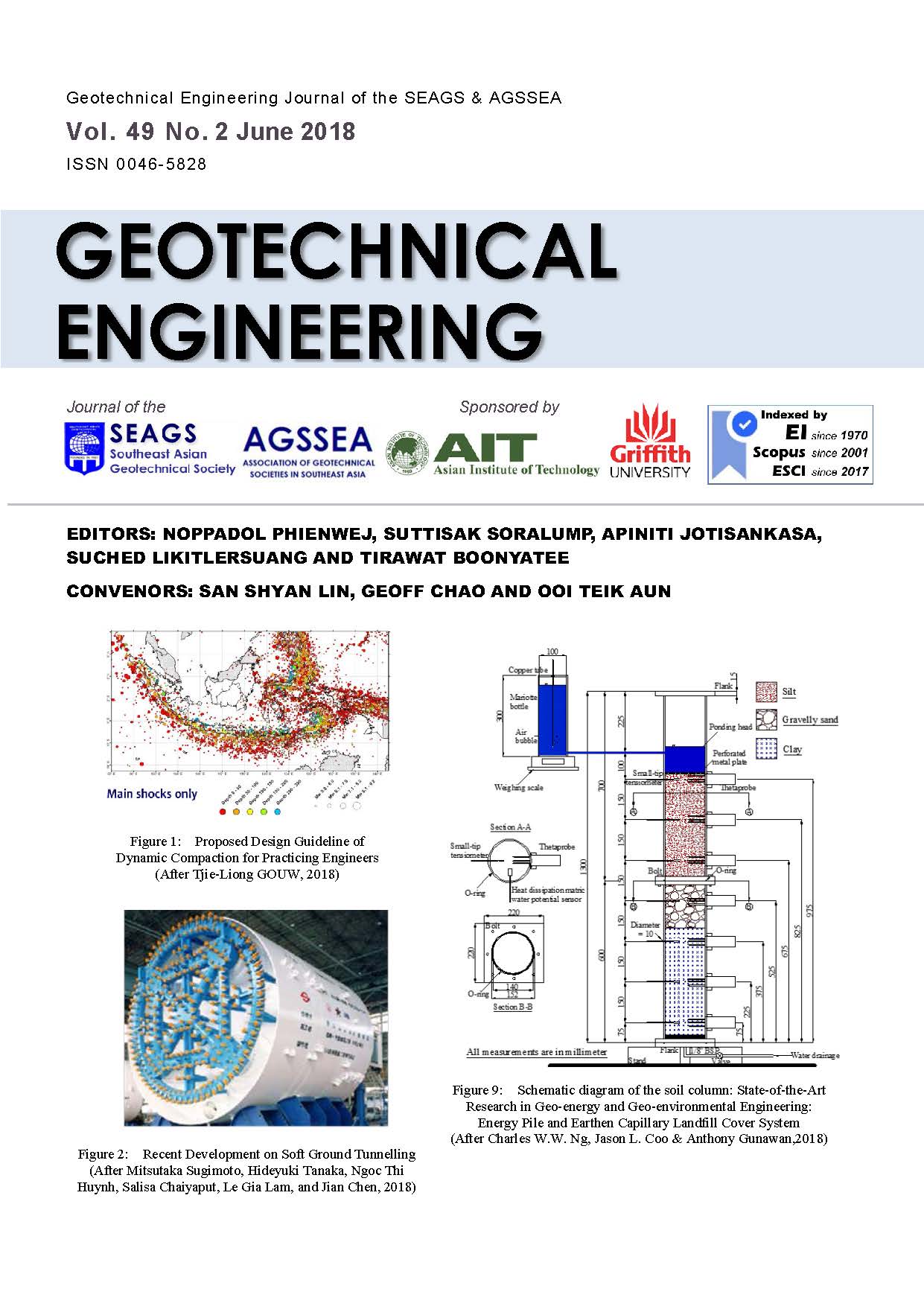Validation of a New Simplified Hypothesis B Method for Calculating Consolidation Settlement of Clayey Soils Exhibiting Creep
Main Article Content
Abstract
This paper introduces a new simplified Hypothesis B method for calculating consolidation settlement of clayey soils exhibiting creep. The general equations of the new simplified Hypothesis B method are presented and explained firstly. After this, four different cases are used to examine the validation of this new method. The four cases are: (i) a single layer of clay with laboratory test data, (ii) one layer of Hong Kong Marine Deposits (HKMD) with three different over-consolidation ratios (OCRs), (iii) one layer of HKMD with vertical drain, and (iv) two layers of HKMD and Alluvium. The fully coupled consolidation analyses of all four cases are done by using one commercial FE program using a soft soil model, one in-house developed FE program and a finite difference method using Yin and Graham’s Elastic Visco-Plastic (EVP) model. The consolidated settlements of the same cases are also calculated using the new simplified Hypothesis B method and Hypothesis A method and are compared with values from numerical methods. The relative errors are calculated by using the FE results as reference. It is, from the above validation cases, found that the settlements calculated using the new simplified Hypothesis B method are closer to test data or the values from the fully coupled finite element (or finite difference) analyses with the least relative errors. Hypothesis A normally under-estimates the settlement a lot with the largest errors. The main conclusion is that the new simplified Hypothesis B method is very suitable for calculating consolidation settlement of clayey soils exhibiting creep and is easy to use by simple spreadsheet calculation.
Article Details

This work is licensed under a Creative Commons Attribution-NonCommercial-NoDerivatives 4.0 International License.
Copyright © 2019 Association of Geotechnical Societies in Southeast Asia (AGSSEA) - Southeast Asian Geotechnical Society (SEAGS).


